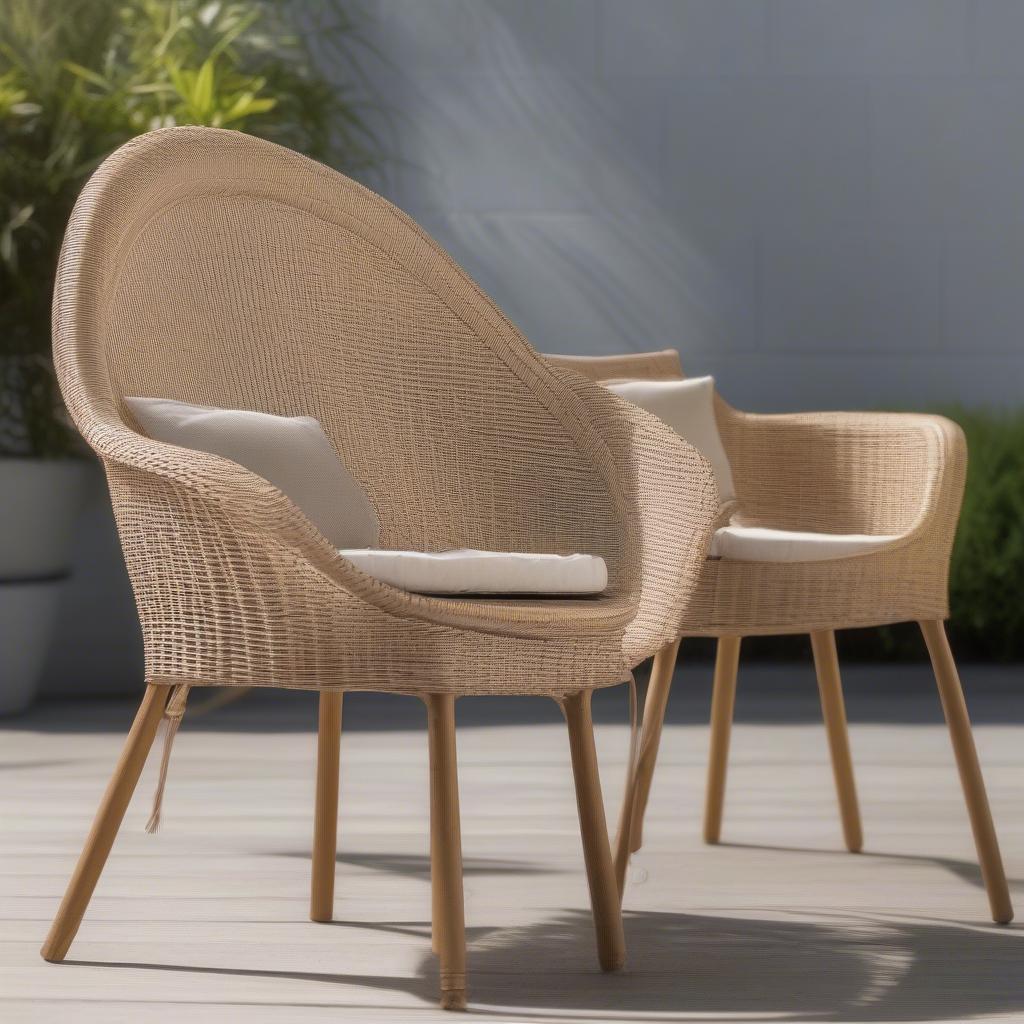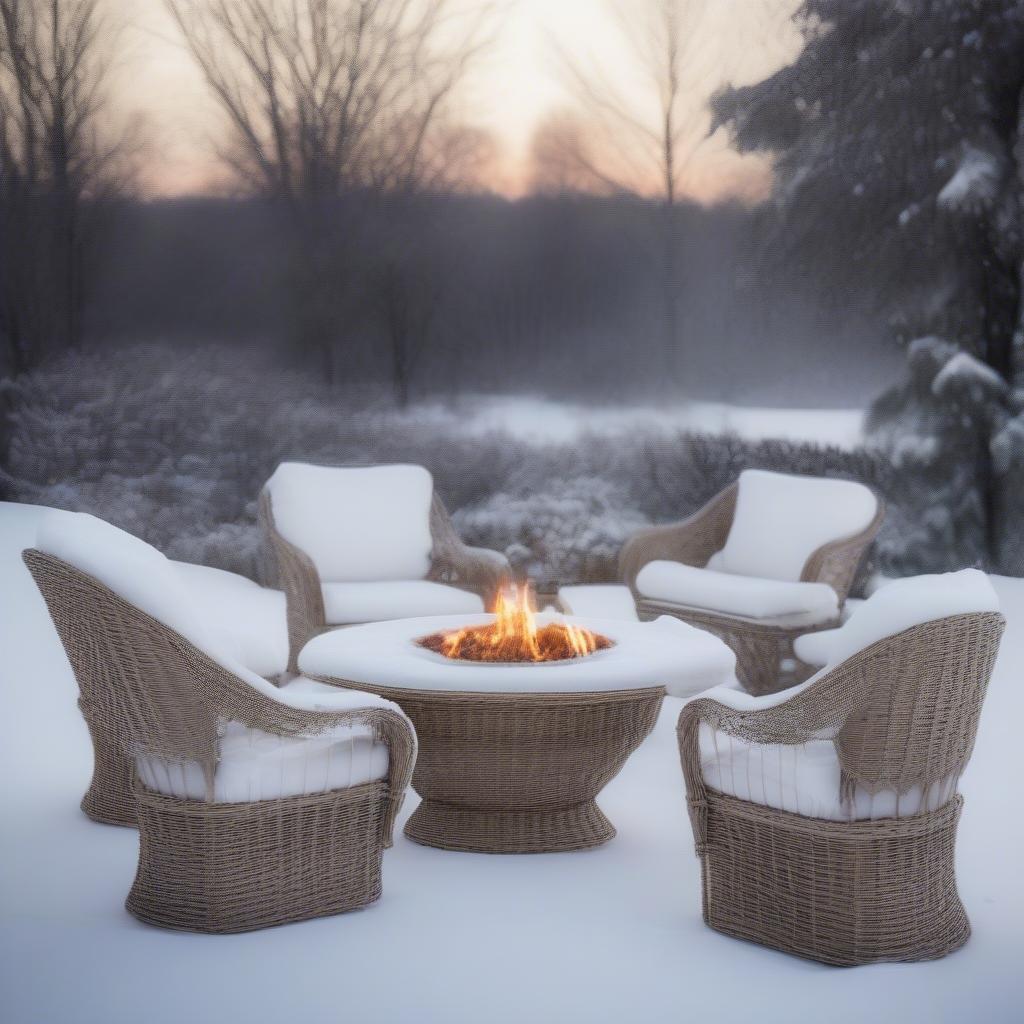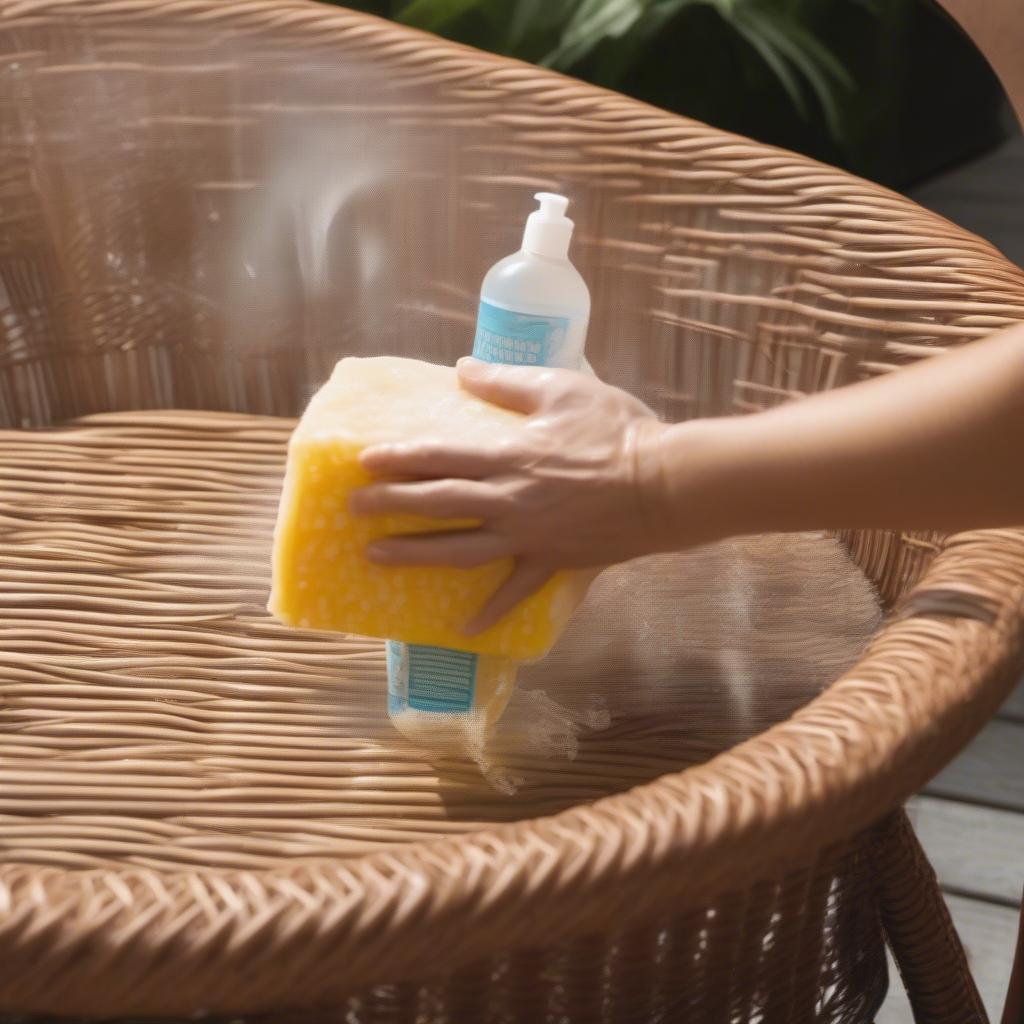Does All Weather Wicker Hold Up to the elements? This is a common question for anyone considering investing in wicker furniture for their patio or garden. Understanding the different types of wicker and their durability is key to making an informed decision. Let’s explore the world of all-weather wicker and discover how it stands up to sun, rain, and everything in between.
Understanding All-Weather Wicker Materials
All-weather wicker isn’t actually wicker at all. Traditional wicker is a natural material, but all-weather wicker is made from synthetic materials designed to withstand the elements. The most common materials are High-Density Polyethylene (HDPE) and Polyvinyl Chloride (PVC), both known for their durability and weather resistance. These materials are woven over a frame, often made of aluminum or steel, to create the classic wicker look.
HDPE vs. PVC: Which is More Durable?
HDPE and PVC both offer excellent weather resistance, but HDPE is generally considered more durable and longer-lasting. It’s resistant to fading, cracking, and splitting, even in harsh conditions. PVC is a more budget-friendly option, but it can be more susceptible to damage from extreme temperatures.
 Comparing HDPE and PVC Wicker: Durability and Weather Resistance
Comparing HDPE and PVC Wicker: Durability and Weather Resistance
How Does All-Weather Wicker Hold Up in Different Climates?
All-weather wicker is designed to withstand a wide range of climates. From the scorching sun of Arizona to the freezing winters of Maine, it can hold up remarkably well. The synthetic materials are resistant to UV rays, preventing fading and discoloration. They also won’t absorb moisture, preventing mold and mildew growth.
Does All Weather Wicker Hold Up in Extreme Heat?
Yes, all-weather wicker typically holds up well in extreme heat. HDPE, in particular, is known for its high melting point, making it resistant to warping or melting in high temperatures.
What About Freezing Temperatures?
All-weather wicker also performs well in freezing temperatures. The synthetic materials are designed to withstand cold weather and won’t become brittle or crack in the cold.
 All-Weather Wicker Furniture in Snowy Conditions
All-Weather Wicker Furniture in Snowy Conditions
Caring for Your All-Weather Wicker
While all-weather wicker is low-maintenance, regular cleaning can extend its lifespan. Simply wipe down your furniture with mild soap and water to remove dirt and debris. Avoid harsh chemicals or abrasive cleaners, which can damage the synthetic fibers.
Can You Leave All-Weather Wicker Outside Year-Round?
In most climates, yes, you can leave all-weather wicker outside year-round. However, in areas with particularly harsh winters, covering your furniture or storing it indoors during the off-season is recommended.
 Cleaning All-Weather Wicker Furniture
Cleaning All-Weather Wicker Furniture
Conclusion: Does All-Weather Wicker Truly Hold Up?
Yes, all-weather wicker does hold up remarkably well, making it an excellent choice for outdoor furniture. Its durability, weather resistance, and low-maintenance nature make it a worthwhile investment for anyone looking to enjoy their outdoor space for years to come. Choosing HDPE over PVC offers enhanced durability, ensuring your furniture withstands even the harshest conditions. So, if you’re wondering, “Does all weather wicker hold up?”, the answer is a resounding yes!
FAQ
- What is the best way to clean all-weather wicker?
- How long does all-weather wicker typically last?
- Is all-weather wicker eco-friendly?
- Can all-weather wicker be repaired if it gets damaged?
- What is the price range for all-weather wicker furniture?
- What are the different styles of all-weather wicker furniture available?
- Can all-weather wicker be left outside in the rain?
Need help? Contact our 24/7 customer service team at +84 388 951 999, or visit our offices in My Dinh, Hanoi, Vietnam or San Francisco, CA 94105, USA.


